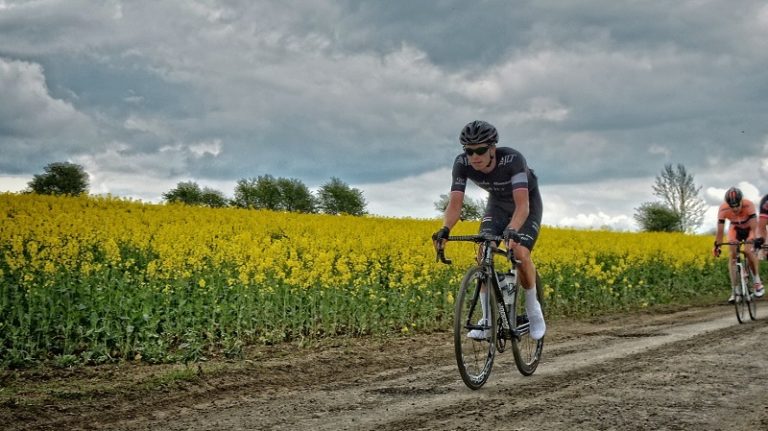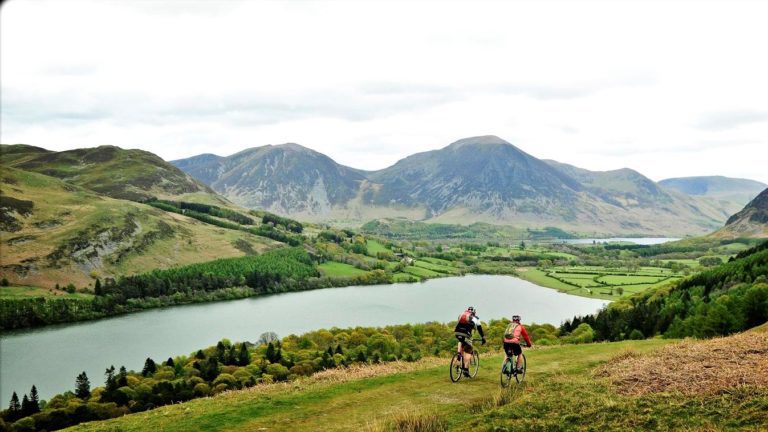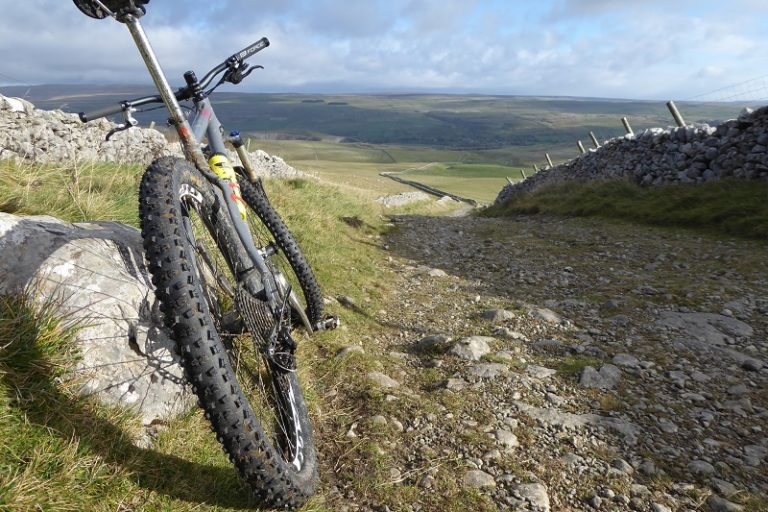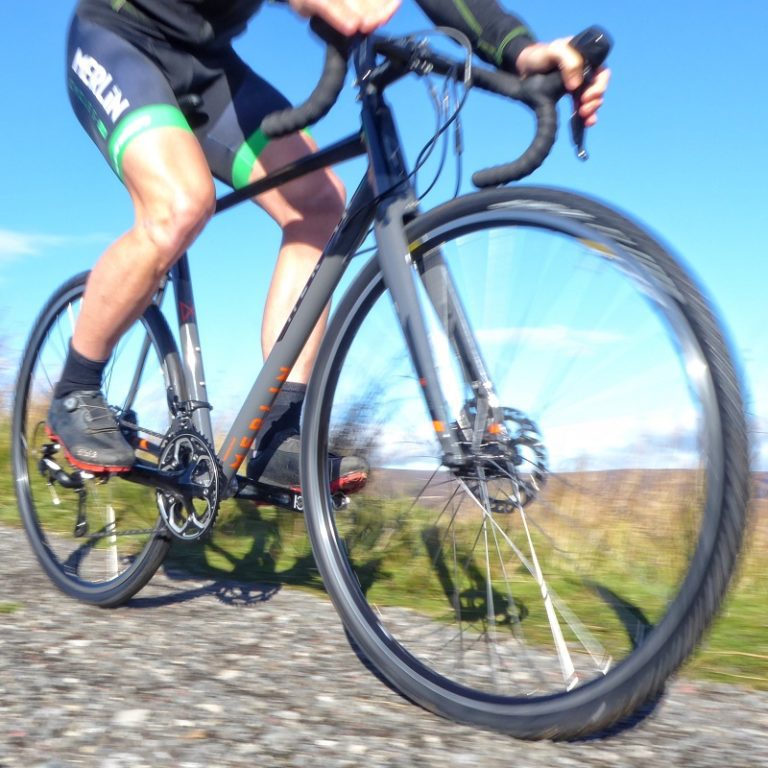The last few years have seen Gravel Bikes become popular all over the cycling world. But do you really need a gravel bike to ride gravel tracks?
N+1 gone mad?
Races such as Strade Bianche (Itlay), Battenkill (US) and Cicle Classic in the UK are, in the main, ridden on standard bikes, so if pro racers use standard road bikes for gravel terrain at high-speed, do we really need gravel bikes? Even UK sportives such as the Tour De Staveley include gravel tracks…

Tour De Staveley Sportive Gravel Track through a Cumbrian Forest.
Horses for Courses
Granted, for longer, or more challenging adventures, a standard road bike might not cut it. Add in the need for mounts for panniers & racks, flexibility to tackle almost MTB like terrain, and more relaxed geometry then the gravel bike would completely have the edge. However, for most of us just wanting to explore local tracks, slightly wider tyres at lower pressures will get you around surprisingly well on a standard road bike – if you ride with care.

Tom Moses winner of the 2014 Cicle Classic Race, following the smoothest bit of track…
How to ride gravel on a road bike
- Reduce steering input – Less grip on gravel means avoiding sharp steering on loose surfaces, ride a little slower and apply your brakes more gently – this should keep you rubber-side-down.
- Pick lines avoiding the worst of the rocky jarring, look ahead and select the smoothest option. Riding a bit slower gives more time to react and change lines in needed.
- Un-weighting front / rear wheels over very rough sections can help keep wheels running true.
- Double padding – two pairs of shorts can give extra comfort for long gravel sections. Double wrapping bar tape can reduce the vibrations through hands and wrists on longer gravel rides.

Take Your Road Bike Off Road
- Fit wider tyres (make sure they will still fit your frame) and run slightly softer to smooth out the terrain and protect rims.
- Let brake calipers out a little, to allow for wheels to run slightly out of true.
- Double up on bar tape to soften the rough terrain through the handlebars.
- Make sure everything is tight. Slightly bend metal bottle cages to make bottles fit tighter.
- Remove un-needed accessories which could be rattle off over gravel.
So Last Century…
Years ago, long before the Gravel Bike marketeers were born, people rode off-road tracks on normal road bikes. Even before the MTB boom years kicked in, rough stuff used to be a ‘thing’ in the north of England and Scotland. Riding standard winter / touring bikes over bridleways and terrain which most people would use a MTB for these days. The ‘Rough Stuff Fellowship’ was about as hardcore as it got.

Mastiles Lane – Seen plenty of rough-stuff action…
Hard as Nails
Blackburn and District CTC rider, Tom Melling, recounts a February 1963 club run over Mastiles Lane – a rough bridleway (Built by Roman Soldiers) in the Yorkshire Dales. Heavy snow settled as high as the wall tops, the only Café in Malham was closed and the snow turned to freezing rain. The club finally completed the 30 miles section from Mastiles back to Blackburn at 10.30PM. In the days long before mobile phones, strava or social media, these rides were spoken of like mythical, legendary tales between club riders. I am willing to bet that none of those riders in 1963 said it was ‘Epic’ or ‘Chapeaued’ each other for getting back to Blackburn either…
So do you really need a gravel bike?
The Merlin Axe Pro is a solid all-rounder of a road bike, equally at home on gravel or tarmac.

The Rough Stuff Fellowship – Rsf.org.uk
